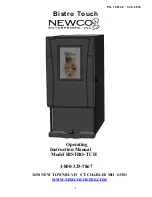
50960066/AP0813
38
PRINTED IN U.S.A.
1.
Use extreme caution for high placement. Be sure
personnel are clear of the area where the load or
the machine could tip or fall.
2.
Set the parking brake, hold the service brake
pedal in fully applied position and slowly raise
the load, maintaining a slight rearward tilt to cra-
dle the load.
3.
As the load approaches the desired height, feath-
er the boom control at minimum speed until the
load is slightly higher than the landing point.
4.
Continue the feathering technique and lower the
load into place.
5.
Free the forks from the load by alternately retract-
ing and raising the boom. If this process is not
possible, very slowly and carefully reverse the
telescopic handler to free the forks from the load.
6.
Lower the forks to travel height.
HANDLING SUSPENDED LOADS
Determine the weight and load center of the load to be
handled. Refer to the telehandler load chart to deter-
mine if the load can safely be handled.
NOTE:
Refer to the standard carriage load chart
when using the boom mounted hook.
Picking Up Suspended Load
1.
Rigging should be in good condition and rated for
the load being lifted.
2.
Rigging should comply with OSHA regulation
§1910.184, “Slings,” or §1926.251, “Rigging
equipment for material handling.”
3.
Avoid lifting double-tiered or any unstable loads.
4.
Only lift loads vertically and clear from any adja-
cent obstacles. Never drag the load horizontally.
5.
Use multiple lift points and taglines to restrain the
load from swinging or rotating.
WARNING
Be sure that the surrounding ground has ade-
quate strength to support the weight of the
machine and the load it is carrying.
Always wear the seat belt provided to prevent
being thrown from the machine. If you are in
an overturn:
- DO NOT jump!
- Hold on tight and stay with the machine!
- Lean away from the fall!
WARNING
The machine becomes less stable as the load
is raised higher.
Before raising a load, be sure the Telescopic
Handler is within the safe lifting parameter as
indicated by the frame angle indicator.
If a hydraulic boom circuit hose should break
with the boom up, shut down the machine. DO
NOT attempt to bring down the boom or make
repairs. Call your Gehl dealer immediately.
As lift height increases, depth perception
decreases. High elevation placement may
require a signal person to guide the operator.
DO NOT ram the lift cylinder to the end of the
stroke. The resulting jolt could spill the load.
A jib or truss boom should ONLY be used to
lift and place loads when the machine is sta-
tionary and the frame is level. Transporting
suspended loads must ALWAYS be done slow-
ly and cautiously, with the boom and load as
low as possible. Use taglines to restrict loads
from swinging, to avoid overturns.
WARNING
Operating conditions can reduce the
machine’s safe operating capacity. Exceeding
the capacity when raising or extending the
boom will cause the machine to tip forward.
WARNING
NEVER exceed the rated operating capacity of
the telehandler as shown on the load zone
charts.
Содержание RS5-19
Страница 8: ...50960066 AP0813 6 PRINTED IN U S A INTENTIONALLY BLANK To be removed as Dealer s file copy...
Страница 16: ...50960066 AP0813 14 PRINTED IN U S A SAFETY L65927 L65928 L65927 L65927 L66613 072798 L65933 L70305 L65942...
Страница 17: ...PRINTED IN U S A 15 50960066 AP0813 SAFETY L65933 L65927 L70305 072798 RED L66613 L65928 L65942...
Страница 47: ...PRINTED IN U S A 45 50960066 AP0813 Grease Fittings Locations 1 2 11 12 3 3 4 5 6 8 10 9 13 10 7...
Страница 69: ...PRINTED IN U S A 67 50960066 AP0813 Date Hours Service Procedure MAINTENANCE LOG...
Страница 70: ...50960066 AP0813 68 PRINTED IN U S A Date Hours Service Procedure MAINTENANCE LOG...
Страница 73: ...PRINTED IN U S A 71 50960066 AP0813 Electrical Schematic...
Страница 74: ...50960066 AP0813 72 PRINTED IN U S A Hydraulic Schematic...
















































